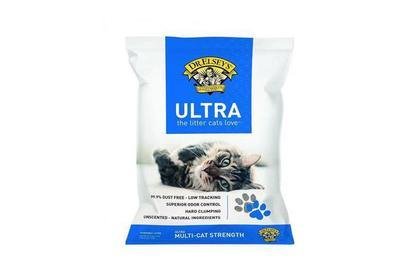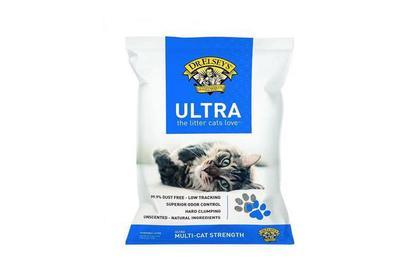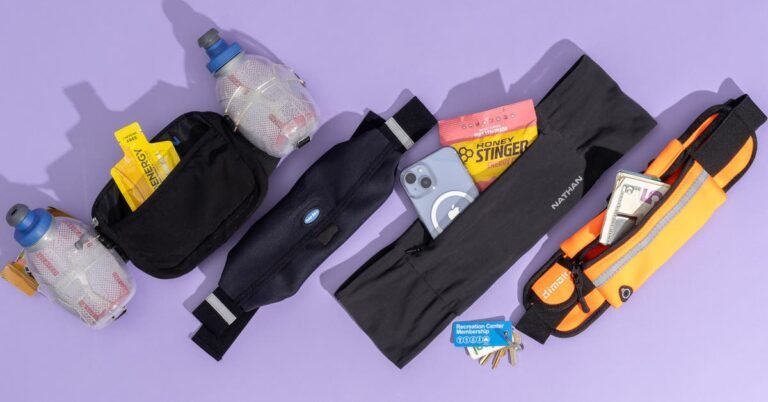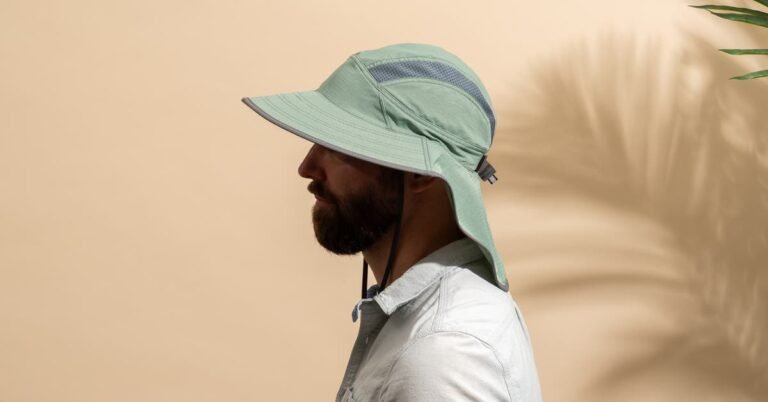Cats, like humans, relieve themselves.
Unlike humans, they do not rely on plumbing and porcelain thrones. Instead, their seat of choice is a crumbly, occasionally smelly pile of granules in a tub—often hidden in human bathrooms or tucked into kitchen corners.
All cat caretakers know what cat litter looks and smells like—we even have our favorites. But what exactly is it made of?
Cat litter is a material designed to mask the smell of your cat’s urine and poop while mimicking where they would use the bathroom if they weren’t domesticated (in the dirt). If your cat is able and knows how to use a litter box, they’ll climb in it and dig a small hole. Then they’ll bear down over the hole, go, and ideally bury the wet spot or poop.
Selecting a good litter for your pet depends on pet safety, tracking, clumping, and their preference. In our guide to the best cat litter, for each litter, we also considered how easy it was to scoop, as well as its odor absorption, cost, and dust levels. There are many different types of litter—from corn to wheat to silica to clay.
After several years of testing dozens of cat litters, we’ve found that clay performs the best, particularly when it’s made purely of sodium bentonite—like our top pick, Dr. Elsey’s Ultra Unscented.
Top pick
In fact, most clay litter is sodium bentonite.
Clumping happens when the cat litter fuses together after it comes into contact with a liquid. Sodium bentonite clay is a great option because it is naturally occurring, it reacts to liquid with no interference, and it doesn’t need additives to mitigate smell. Also, the litter lasts longer because the box doesn’t have to be emptied daily—you simply scoop out the dirty litter.
“No litter is perfect. Most will excel at one thing, like, say, clumping, and fail spectacularly at another, like odor control,” said staff writer Mel Plaut, who wrote our best cat litter guide. “But in my testing, Dr. Elsey’s was either above average or excellent at most things a litter should do: odor control, clumping, and tracking. It has mediocre dust control, and the packaging is hard to pour from, but you can’t have it all.” It’s been our pick since 2017.
There are also non-clumping clay litters. These are usually calcium bentonite varieties, which are similar to sodium bentonite but do not clump. Some vets recommend them for kittens, who may eat the clumps.

There are also non-clay litters, including silica gel, corn, wheat, and tofu, some of which are non-clumping. The only non-clay option we tested—and ultimately included in our guide—was World’s Best Cat Litter, which is corn-based. But the clay litters we tested still outperformed it.
A litter’s particulars will be dependent on the mines a company uses. As reported by The New York Times, the majority of the world’s litter comes from strip mines in the western United States, primarily bentonite mines in Wyoming.
There are state and federal laws, including the Surface Mining Control and Reclamation Act of 1977, that regulate restoration of bentonite mining. And there are guidelines on handling stripped mines, funding for the reclamation process, and what land must be restored after mining.
Cat litter can also be divided into two categories: scented and unscented. In our guide to the best cat litter, Mel advises against using scented litter, since some cats may not like or tolerate added fragrance, and that could lead to your cat avoiding the box and instead going around the house. Also, some added fragrances contain chemicals that can be harmful to humans.
“Many added fragrances—not just in cat litter—can contain phthalates, which are known to be endocrine-disrupting chemicals,” Mel said.
As with most things in life, choosing a cat litter comes down to preference and budget. This decision may be the most you’ve ever had to think about a bathroom break—especially one that isn’t your own. But remember, there is no sweeter relief than having a comfortable space to use the bathroom—for humans and cats alike.
This article was edited by Hannah Rimm and Maxine Builder. Additional reporting by Mel Plaut.
Source link
[og_img
Cats, like humans, relieve themselves.
Unlike humans, they do not rely on plumbing and porcelain thrones. Instead, their seat of choice is a crumbly, occasionally smelly pile of granules in a tub—often hidden in human bathrooms or tucked into kitchen corners.
All cat caretakers know what cat litter looks and smells like—we even have our favorites. But what exactly is it made of?
Cat litter is a material designed to mask the smell of your cat’s urine and poop while mimicking where they would use the bathroom if they weren’t domesticated (in the dirt). If your cat is able and knows how to use a litter box, they’ll climb in it and dig a small hole. Then they’ll bear down over the hole, go, and ideally bury the wet spot or poop.
Selecting a good litter for your pet depends on pet safety, tracking, clumping, and their preference. In our guide to the best cat litter, for each litter, we also considered how easy it was to scoop, as well as its odor absorption, cost, and dust levels. There are many different types of litter—from corn to wheat to silica to clay.
After several years of testing dozens of cat litters, we’ve found that clay performs the best, particularly when it’s made purely of sodium bentonite—like our top pick, Dr. Elsey’s Ultra Unscented.
Top pick
In fact, most clay litter is sodium bentonite.
Clumping happens when the cat litter fuses together after it comes into contact with a liquid. Sodium bentonite clay is a great option because it is naturally occurring, it reacts to liquid with no interference, and it doesn’t need additives to mitigate smell. Also, the litter lasts longer because the box doesn’t have to be emptied daily—you simply scoop out the dirty litter.
“No litter is perfect. Most will excel at one thing, like, say, clumping, and fail spectacularly at another, like odor control,” said staff writer Mel Plaut, who wrote our best cat litter guide. “But in my testing, Dr. Elsey’s was either above average or excellent at most things a litter should do: odor control, clumping, and tracking. It has mediocre dust control, and the packaging is hard to pour from, but you can’t have it all.” It’s been our pick since 2017.
There are also non-clumping clay litters. These are usually calcium bentonite varieties, which are similar to sodium bentonite but do not clump. Some vets recommend them for kittens, who may eat the clumps.

There are also non-clay litters, including silica gel, corn, wheat, and tofu, some of which are non-clumping. The only non-clay option we tested—and ultimately included in our guide—was World’s Best Cat Litter, which is corn-based. But the clay litters we tested still outperformed it.
A litter’s particulars will be dependent on the mines a company uses. As reported by The New York Times, the majority of the world’s litter comes from strip mines in the western United States, primarily bentonite mines in Wyoming.
There are state and federal laws, including the Surface Mining Control and Reclamation Act of 1977, that regulate restoration of bentonite mining. And there are guidelines on handling stripped mines, funding for the reclamation process, and what land must be restored after mining.
Cat litter can also be divided into two categories: scented and unscented. In our guide to the best cat litter, Mel advises against using scented litter, since some cats may not like or tolerate added fragrance, and that could lead to your cat avoiding the box and instead going around the house. Also, some added fragrances contain chemicals that can be harmful to humans.
“Many added fragrances—not just in cat litter—can contain phthalates, which are known to be endocrine-disrupting chemicals,” Mel said.
As with most things in life, choosing a cat litter comes down to preference and budget. This decision may be the most you’ve ever had to think about a bathroom break—especially one that isn’t your own. But remember, there is no sweeter relief than having a comfortable space to use the bathroom—for humans and cats alike.
This article was edited by Hannah Rimm and Maxine Builder. Additional reporting by Mel Plaut.
Your Cat Is Pooping on Wyoming-Mined Clay (And More Fascinating Kitty Litter Facts)
[title_words_as_hashtags




